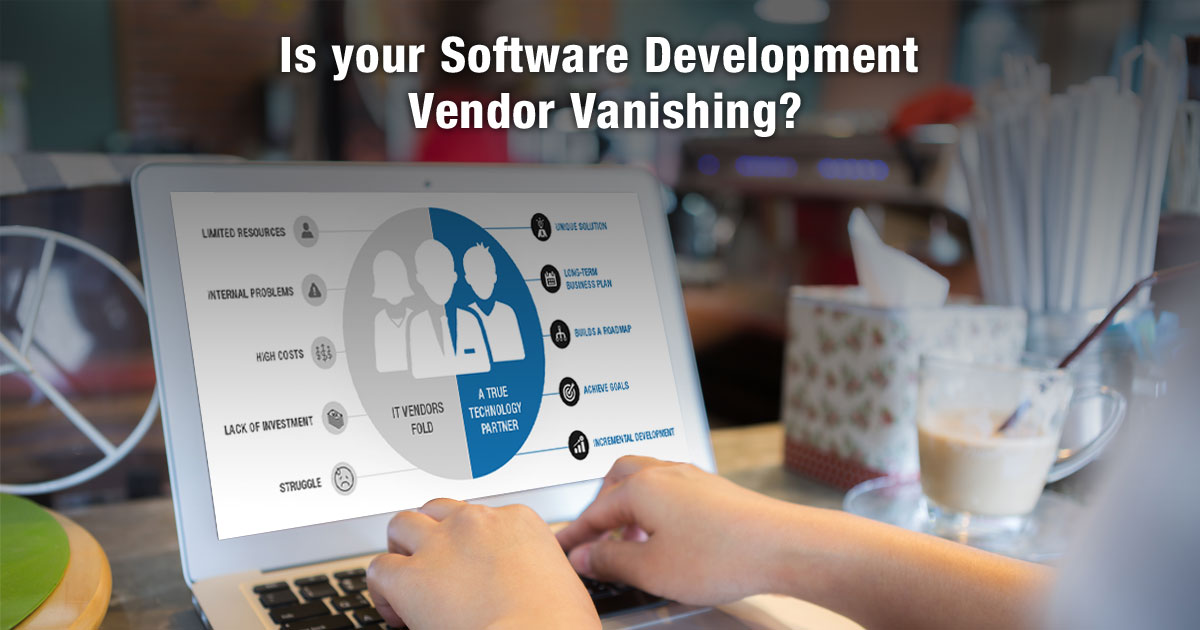Posted By
Gaurang Patel
on
7. July 2016 01:56
Many software development vendors fold because they lack a strategic management approach to effectively work with the limited resources, high overheads, and complex business models involved in the technology industry.
This increasing failure rate among IT vendors due to immature development methodologies is a growing problem for companies of all industries because when their IT partner fails, core business systems are left in the dark.

Why do IT vendors fold?
Information technology vendors engage in fierce competition for limited resources and struggle to stay in business due to numerous factors surrounding high costs and complex client requests. Other internal problems include:
- Inadequate development resources to successfully build comprehensive solutions.
- Lack of investment in staying up to date with the latest technology.
- Little or no regard for managing their operational costs.
- Poor management in regards to project updates, feedback, and design.
- Poor communication and customer service.
These issues stem from the fact that these IT vendors do not have the strategic processes in place to build working solutions that their clients expect. Their development methods often result in applications with poor performance, unstable code, confusing user interface, and lack of long-term scalability, and when they do fold, core business systems are left unavailable.
How can you minimize the impact of a folding IT vendor on your business?
If you recognize the above warning signs, you can take steps to proactively mitigate the risk of negatively impacted operations. To begin moving your data to a secure, permanent system, your business should take a thorough look under the cover of your existing use of technology. In addition to learning more about your vendor’s resources, development methods, and business background, you can:
- Document existing systems and data.
- Hire a second vendor to audit the existing partner’s work.
- Explore working with another vendor on a smaller project.
Documenting existing systems and assessing the performance of your current development partner can help you make a logical decision about how to proceed with current and future software projects. A second vendor can be helpful in analyzing an existing vendor’s work for scalability and effectiveness, while offering options to better suit your unique business operations.
Are you experiencing the above warning signs with your IT partner?
Don’t wait until they fold to pick up the pieces of your broken system; proactively seek the right technology partner who can help you make your systems stronger. A true technology partner:
- Works with clients to understand their objectives and long-term business plan
- Defines solutions that will help them achieve those goals
- Builds a roadmap that defines the route to a working solution from the ground-up
- Executes the construction of your unique solution with incremental development
Call us at 484-892-5713 or Contact Us today to explore the warning signs and problems involved in software development, and to discuss if your business is leveraging technology to its full potential.
Rate This Post:
cc8de68e-1fa6-4613-82c0-c1ca6ff0e7db|1|4.0


